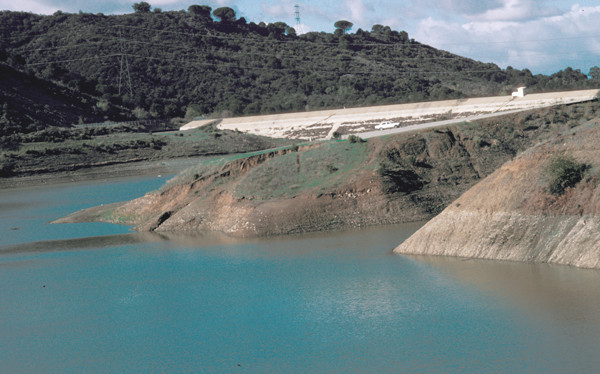
by Jay R. Thompson Friday, March 15, 2013

Results of a new model revising the Palmer Drought Severity Index suggest there has been little increase in drought over the last 60 years. Copyright Bruce Molnia, Terra Photographics, ESW Image Bank
The severity and frequency of drought are expected to increase worldwide as climate change leads to a warmer atmosphere and regional changes in precipitation, and some research has shown that drought is already increasing. But a new study concludes that the increase in drought claimed by previous studies has been overestimated and that there has actually been little increase over the last 60 years.
A team of researchers from Princeton University and Australian National University suggests that a widely used tool for assessing drought — the Palmer Drought Severity Index (PDSI) — isn’t up to the task of large-scale drought assessment.
The PDSI was developed in the 1960s by Wayne Palmer, a meteorologist for the U.S. Weather Bureau, as a way to convert multiyear temperature and precipitation data into a single number representing relative wetness for each region of the United States. Zero, for example, represents average wetness whereas negative 3.4 would indicate severe drought and positive 2.8 would mean an area was moderately moist.
“The Palmer Index is basically a computer model that simulates the hydrological cycle, and in its original form, the model calculates potential evaporation using a simple temperature-driven algorithm,” says Justin Sheffield, a hydrologist at Princeton and lead author of the new study in Nature. Although it is widely used, “I think there’s a long legacy of doubt in its use in climate change studies,” Sheffield says.
Sheffield and his team took the original form of the index and updated it to include potential evaporation, which depends on solar radiation, wind speed and humidity.
Using their revised model, Sheffield and his team processed global data from 1950 through 2008 to calculate drought, and then compared their results with the previous model. Under the original PDSI, the global average fell 0.04 units per year toward the end of that period, with the negative value indicating an increase in drought. But when incorporating the new variables for the same period, the global average fell only 0.02 units per year — a number the authors wrote was “not significant.” Additionally, the original PDSI indicated the global area experiencing drought increased by about 0.56 percent per year from 1980 to 2008, while the researchers using the new model found that global drought area increased by only about 0.08 percent per year.
Aiguo Dai, a climate scientist at the University of Albany, State University of New York, says he is skeptical about the new conclusions. “I think it’s premature to conclude that the drying trend is [less than what has been reported over] the last 50, 60 years,” Dai says. In particular, Dai takes issue with the precipitation data Sheffield’s team used, as well as the time period used to calibrate the model. “Essentially, they enlarged the standard deviation of the PDSI,” he says.
“What they’re saying here does seem reasonable,” says Brad Rippey, a meteorologist at the U.S. Department of Agriculture. The period Sheffield’s team used as a starting point for their dataset was a relatively dry one, which may have skewed the results, Rippey says, but he adds that that may have been a result of the available data. The original PDSI does have “some drawbacks” though, he says. “Maybe this is a better way to tackle the beast.”
The new model contains uncertainty as well, due to the availability and quality of meteorological and solar radiation data, Sheffield notes, but improved climate models, satellites and ground sensors are helping to improve that.
Drought models “can always be improved, so it’s not a done deal,” he says. Additionally, Sheffield says that although past drought may not have been as severe as previously thought, “if we move forward 50 years or 100 years, we can expect things to get worse.”
© 2008-2021. All rights reserved. Any copying, redistribution or retransmission of any of the contents of this service without the expressed written permission of the American Geosciences Institute is expressly prohibited. Click here for all copyright requests.